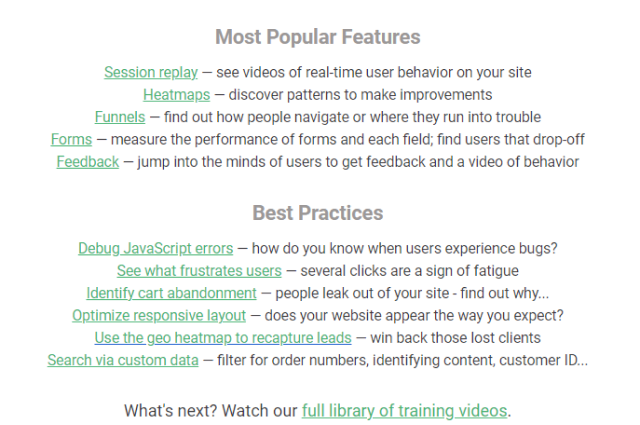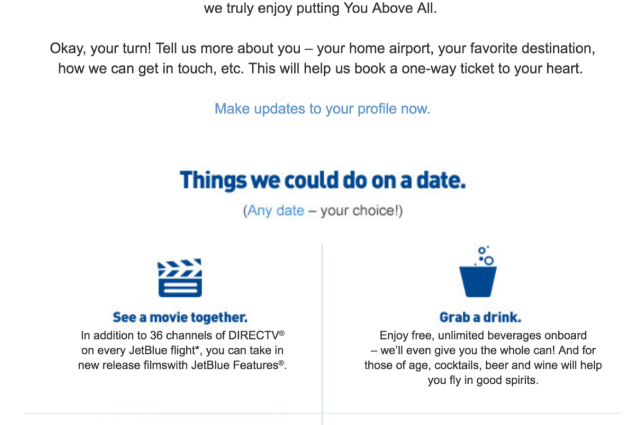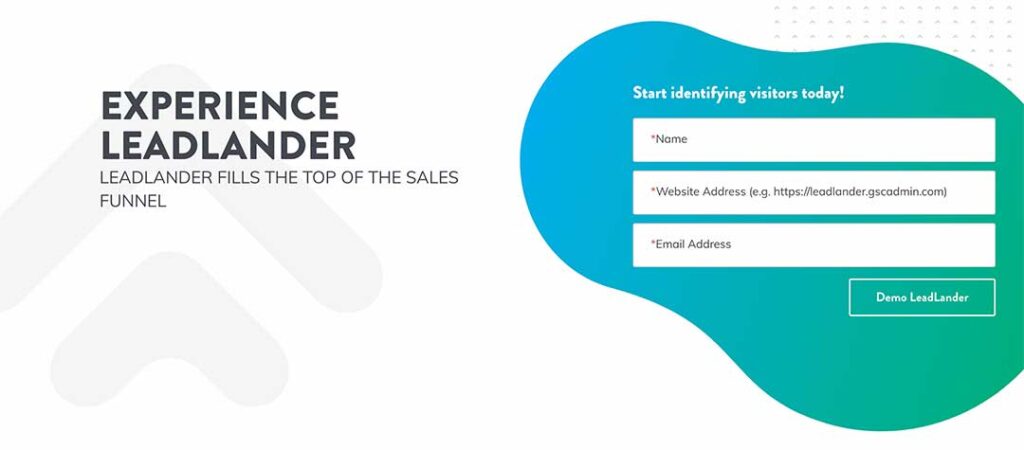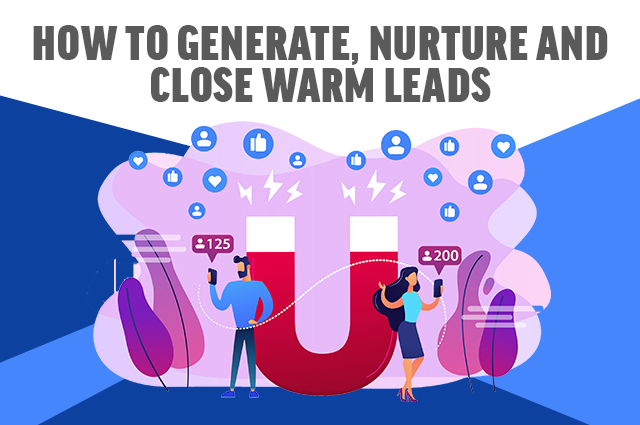Updated May 17, 2022
Trafficking in sales leads consistently is not enough to make your business successful—you need to consistently convert a high percentage of those leads to hit your goals.
That’s why lead nurturing is so important. And if you want to juice your lead nurturing campaign for all it’s worth, you have to use email marketing.
This article will tell you why lead nurturing with email is effective. We’ll also give you some real-world examples of email templates you can use to improve your lead nurturing process.
Understanding the value of email marketing and lead nurturing
If you aren’t already conducting lead nurturing with your email marketing strategy, you may not see enough value to justify the effort. But multiple data points signal the opposite.
For example, 80% of leads never translate into sales. That means you need to perform lead nurturing if you want to lose less than 80% of the leads you generate.
Additionally, 69% of professional marketers say email is the best channel for lead nurturing. And email marketing has an ROI of $36 for every $1 spent.
That makes email the apparent channel for nurturing your leads.
Best practices for email lead nurturing
Use sequences, not standalone emails
If you want to nurture a lead, you need to bring them from where they currently are in the purchasing process to the finish line. That’s almost always going to take more than one email.
It’s why you should use email sequences instead of standalone emails. These focus on leading your prospects on a journey toward becoming your customer. The samples below will give you a better sense of accomplishing that.
Use personalization as much as you can
The more personalization you can use, the better when it comes to email marketing. Data shows personalized emails can increase revenue by 760%. So you should make a point of building as much personalization into your lead nurturing emails as possible.
Use high-resolution images
It turns out that old saying about a picture being worth a thousand words was pretty accurate. Research shows including images in a piece of content increases the average person’s willingness to read it by 80%.
But not all pictures have the same impact. You should strive to use high-resolution and relevant images to maximize your performance. It might seem obvious, but it’ll take you a long way until you’re ready to get into video, anyway.
Keep it short and simple
It’s essential to understand how people interact with their marketing emails. Most of your readers will receive dozens of emails daily. So keep things short and sweet—generally, the more concise language you use, the better.
Test your performance and adapt
Your first iteration of email lead nurturing is unlikely to hit it out of the park. Evaluate the performance of your campaigns over time and adjust as you take in data and consider A/B testing.
Focus on timing
If you look at the statistics, the timing of when you deliver your emails may be the most critical factor in determining the success of your campaigns.
SuperOffice has some great statistics for this, such as:
- 23% of all email opens occur in the first hour after delivery
- After 24 hours pass, an email has lower than a 1% chance of being opened
- People are most likely to read emails at around 10:00 AM and 1:00 PM (after settling into work and after getting back from lunch)
If it’s easier, you can use Gmail to schedule your emails to send later. That way, they go out exactly when your audience is most likely to read them while allowing you to write them whenever you want.
To do that, just click on the little arrow on the right side of the send button while composing a message in Gmail. It’ll give you the option to schedule the message for later.
Try segmenting
If you’re not already segmenting your email lists, now is a good time to start. Some marketers have seen over a 760% increase in revenue from their segmented campaigns.
There are multiple ways to split up your audience, including:
- Geographic location
- Demographic information
- Website browsing behavior
- Psychographic profiles
- Any other categories you think could be useful
You might even let people segment themselves when signing up for your list.
For example, you could ask people which of your products they care most about and then split your list based on those responses.
Create targeted content for each audience segment
Once you’ve split your audience into segments, you can target them with content closely aligned with their purchasing goals.
Let’s say you ask people which of your products interest them most when they sign up for your list. You could create a different email nurturing campaign for each group, which features unique content about the different products they selected.
This type of personalization will be key to the efficacy of your nurturing campaigns. The more relevant you can make your content, the likelier someone is to respond to it.
Optimize your calls to action
Finally, it all comes together with your call to action. This shouldn’t be the same thing in every email you send.
Instead, you want to vary the CTA based on the content of the message. Everything you send your audience should feel timely and unique instead of another version of the same recycled content.
If you’re using a clickable CTA, make sure it’s optimized for mobile viewers. More than 50% of internet traffic comes from mobile devices. So you could be missing out on a big potential audience if your CTAs aren’t optimized for mobile.
Real-world examples of email lead nurturing

Headspace
Personalized emails have a much higher open rate than non-personalized ones. So if you want to increase the impact of your email marketing, you need to personalize them.
Headspace sends out targeted emails to people who have used the app once but haven’t become consistent users yet.
How to apply this template to your company
Headspace’s template is an excellent example of how to create targeted email content for different audience groups. You can do that no matter what industry you operate in by:
- Understanding what your goal with this specific segment of your audience is
- Creating content that moves an audience member towards that goal
Mouseflow
Lead nurturing emails follow a sequence designed to take your prospects and turn them into paying customers. Mouseflow’s email template is set up perfectly for this. It provides immediate value to members by sharing links to popular features and best practices.
How to apply this template to your company
Your company can do the same thing Mouseflow does with its opening email marketing salvo. Like this email template, it’s also a good idea for your company to begin its lead nurturing sequence by establishing your own value.
Link to all of your best content in a single welcome email. You could even change the links in your welcome email based on the specific marketing segment an individual member of your list belongs to.

Monday.com
If you offer a free trial, then it’s inevitable you’ll lose contact with many people who sign up for it once the trial ends. But you may be able to increase your conversion rate by making it easier for trial users to take the next step when their trial ends.
Monday.com gives users three easy ways to continue their relationship. Whether the user wants to buy a Monday.com subscription, extend their trial, or close their account, they can do it directly from the email.
How to apply this template to your company
Your company could use a similar strategy to offer a free trial. When someone is nearing the end of their trial, send an email that lays out their options for the next step.
Even if someone decides to close their account with you at the end of their trial, at least you’ll have that clarity. You’ll be able to change how you market to that person in the future based on that information.
JetBlue
JetBlue has a beautiful email template that focuses on engaging previous customers. The goal of the template is to ensure customers choose JetBlue the next time they fly.
This template uses features sharp, funny copy. It’s an example of how using creativity to create a genuinely engaging email can strengthen your company’s connection with a lead and improve your reputation in their eyes.
How to apply this template to your company
If you want to focus on keeping your audience engaged with some of your emails, this is a great way to do it. Like JetBlue, you can also come up with witty, endearing email copy to strengthen the bond you have with a lead. This should ultimately increase the chances of becoming a paid customer.

Skillshare
This email template from Skillshare is designed to convert trial users into full-on customers. It first reminds the recipient that their trial is about to end. Then the email highlights the unique products the recipient might enjoy. These products are based on the user’s behavior and their interests.
How to apply this template to your company
This template from Skillshare is a great example of how to use timing in your lead nurturing campaigns. If you run a trial program, you could create a similar email template: Remind users that their trial is about to end and highlight some of the products you think they would get value from based on their historical interactions with your business.
LeadLander makes it easier to get the data you need to create effective lead nurturing emails
If you want to create genuinely effective lead nurturing emails, you need to have a keen understanding of your target audience. So understand how leads interact with your website.
LeadLander makes this a breeze. Our website visitor tracking software tells you how users get to your site and about their behavior. You can use this data to make smarter decisions about the lead nurturing emails you create. Want to learn more about what we can do to help? Sign up for a demo today.

Related Reading


